
伤口世界
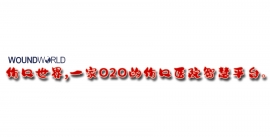
- 星期二, 14 3月 2023
Evaluation of an infection control link nurse program: an analysis using the RE-AIM framework
Mireille Dekker1*, Irene P. Jongerden2 , Martine G. Caris1 , Martine C. de Bruijne2 , Christina M. J. E. Vandenbroucke‑Grauls1,3 and Rosa van Mansfeld1
*Correspondence:
Mireille Dekker
该Email地址已收到反垃圾邮件插件保护。要显示它您需要在浏览器中启用JavaScript。
1 Department of Medical Microbiology and Infection Prevention, Amsterdam UMC, Vrije Universiteit Amsterdam, De Boelelaan 1118, 1081 HV Amsterdam, The Netherlands
2 Department of Public and Occupational Health, Amsterdam UMC, Vrije Universiteit Amsterdam, Amsterdam Public Health Research Institute, Amsterdam, The Netherlands
3 Department of Clinical Medicine – Department of Clinical Epidemiology, Aarhus University, Aarhus, Denmark
© The Author(s) 2023. Open Access This article is licensed under a Creative Commons Attribution 4.0 International License, which permits use, sharing, adaptation, distribution and reproduction in any medium or format, as long as you give appropriate credit to the original author(s) and the source, provide a link to the Creative Commons licence, and indicate if changes were made. The images or other third party material in this article are included in the article’s Creative Commons licence, unless indicated otherwise in a credit line to the material. If material is not included in the article’s Creative Commons licence and your intended use is not permitted by statutory regulation or exceeds the permitted use, you will need to obtain permission directly from the copyright holder. To view a copy of this licence, visit http://creativecommons.org/licenses/by/4.0/. The Creative Commons Public Domain Dedication waiver (http://creativeco mmons.org/publicdomain/zero/1.0/) applies to the data made available in this article, unless otherwise stated in a credit line to the data.
Abstract
Background Important elements of programs that train and support infection control link nurses (ICLN) are the engagement of stakeholders, support from hospital and ward management and a structure for iterative improvement. The effects of programs, that combine all these elements, are unknown. We evaluated such a comprehensive program to explore its impact on link nurses and infection prevention practices and routines.
Methods We used the RE-AIM framework, a robust, evidence-based framework within the field of Implementation Science, to evaluate the impact of our ICLN training and support program. We used a mixed methods approach and organized the outcomes along its five dimensions: Reach, Effectiveness, Adoption, Implementation and Maintenance.
Results Between 2014 and 2018, on average 91% of the inpatient wards and 58% of the outpatient clinics participated in the program (Reach) and impacted guideline adherence in inpatient wards. Link nurses felt engaged and empowered, and perceived their contribution to these results as pivotal. Ward managers confirmed the value of ICLN to help with implementing IPC practices (Effectiveness). The program was adopted both at the hospital and at the ward level (Adoption). Based on ongoing evaluations, the program was adapted by refining education, training and support strategies with emphasis on ward specific aspects (Implementation). The ICLN program was described as a key component of the infection prevention policy to sustain its effects (Maintenance).
Conclusions Our infection control link nurse program helped ICLN to improve infection prevention practices, especially in inpatient wards. The key to these improvements lay within the adaptability of our link nurse program. The adjustments to the program led to a shift of focus from hospital goals to goals tailored to the ward level. It allowed us to tailor activities to align them with the needs specific to each ward.
Keywords Quality improvement, Patient safety, Nursing practice, Nosocomial infections, Infection prevention
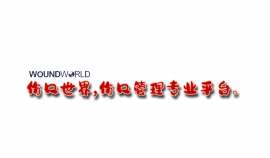
- 星期一, 13 3月 2023
Empagliflozin protects mice against diet-induced obesity, insulin resistance and hepatic steatosis
Bernhard Radlinger1,2 & Claudia Ress1,2 & Sabrina Folie1,2 & Karin Salzmann1,2 & Ana Lechuga1,2 & Bernhard Weiss 1,2,3 & Willi Salvenmoser4 & Michael Graber5 & Jakob Hirsch5 & Johannes Holfeld5 & Christian Kremser6 & Patrizia Moser3 & Gabriele Staudacher1,2 & Tomas Jelenik7 & Michael Roden7,8,9 & Herbert Tilg2 & Susanne Kaser1,2
Susanne Kaser
该Email地址已收到反垃圾邮件插件保护。要显示它您需要在浏览器中启用JavaScript。
1 Christian Doppler Laboratory for Metabolic Crosstalk, Medical University Innsbruck, Innsbruck, Austria
2 Department of Internal Medicine I, Medical University Innsbruck, Innsbruck, Austria
3 Innpath GmbH, Innsbruck, Austria
4 Institute of Zoology and Center of Molecular Biosciences Innsbruck (CBMI), Leopold Franzens University Innsbruck, Innsbruck, Austria
5 Department of Cardiac Surgery, Medical University Innsbruck, Innsbruck, Austria
6 Department of Radiology, Medical University Innsbruck, Innsbruck, Austria
7 Institute for Clinical Diabetology, German Diabetes Center, Leibniz Center for Diabetes Research at Heinrich-Heine-University Düsseldorf, Düsseldorf, Germany
8 Department of Endocrinology and Diabetology, Medical Faculty and University Hospital Düsseldorf, Heinrich-Heine-University Düsseldorf, Düsseldorf, Germany
9 German Center for Diabetes Research, Partner Düsseldorf, München-Neuherberg, Germany
Received: 5 September 2022 /Accepted: 31 October 2022 / Published online: 16 December 2022 © The Author(s) 2022
Abstract Aims/hypothesis Sodium–glucose cotransporter 2 (SGLT2) inhibitors are widely used in the treatment of type 2 diabetes, heart failure and chronic kidney disease. Their role in the prevention of diet-induced metabolic deteriorations, such as obesity, insulin resistance and fatty liver disease, has not been defined yet. In this study we set out to test whether empagliflozin prevents weight gain and metabolic dysfunction in a mouse model of diet-induced obesity and insulin resistance.
Methods C57Bl/6 mice were fed a western-type diet supplemented with empagliflozin (WDE) or without empagliflozin (WD) for 10 weeks. A standard control diet (CD) without or with empagliflozin (CDE) was used to control for diet-specific effects.
Metabolic phenotyping included assessment of body weight, food and water intake, body composition, hepatic energy metabolism, skeletal muscle mitochondria and measurement of insulin sensitivity using hyperinsulinaemic–euglycaemic clamps.
Results Mice fed the WD were overweight, hyperglycaemic, hyperinsulinaemic and insulin resistant after 10 weeks. Supplementation of the WD with empagliflozin prevented these metabolic alterations. While water intake was significantly increased by empagliflozin supplementation, food intake was similar in WDE- and WD-fed mice. Adipose tissue depots measured by MRI were significantly smaller in WDE-fed mice than in WD-fed mice. Additionally, empagliflozin supplementation prevented significant steatosis found in WD-fed mice. Accordingly, hepatic insulin signalling was deteriorated in WD-fed mice but not in WDE-fed mice. Empagliflozin supplementation positively affected size and morphology of mitochondria in skeletal muscle in both CD- and WD-fed mice.
Conclusions/interpretation Empagliflozin protects mice from diet-induced weight gain, insulin resistance and hepatic steatosis in a preventative setting and improves muscle mitochondrial morphology independent of the type of diet.
Keywords Empagliflozin . Insulin resistance . Obesity . SGLT2 inhibition . Skeletal muscle mitochondria . Steatosis . Western-type diet
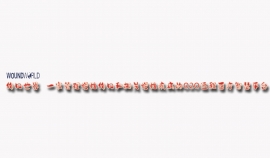
- 星期五, 10 3月 2023
Do sex differences in paediatric type 1 diabetes care exist? A systematic review
Silvia A. G. de Vries1 iD Carianne L. Verheugt1 iD Dick Mul2 iD Max Nieuwdorp1 iD Theo C. J. Sas2,3
Received: 26 April 2022 /Accepted: 25 November 2022
© The Author(s) 2023
Abstract
Aims/hypothesis Sex differences are present in cardiovascular care and in outcomes among adults with type 1 diabetes mellitus, which typically commences in childhood. Whether sex influences care and outcomes in childhood is not known. This systematic review provides an overview of sex differences in children with type 1 diabetes, focusing on patient and disease characteristics, treatment, comorbidities and complications.
Methods Literature in MEDLINE up to 15 June 2021 was searched, using the terms diabetes mellitus, sex characteristics, sex distribution, children and/or adolescents. All primary outcome studies on children with type 1 diabetes that mentioned a sex difference in outcome were included, with the exception of qualitative studies, case reports or case series. Studies not pertaining to the regular clinical care process and on incidence or prevalence only were excluded. Articles reporting sex differences were identified and assessed on quality and risk of bias using Joanna Briggs Institute critical appraisal tools. Narrative synthesis and an adapted Harvest plot were used to summarise evidence by category.
Results A total of 8640 articles were identified, rendering 90 studies for review (n=643,217 individuals). Studies were of observational design and comprised cohort, cross-sectional and case–control studies. Most of the included studies showed a higher HbA1c in young female children both at diagnosis (seven studies, n=22,089) and during treatment (20 out of 21 studies, n=144,613), as well as a steeper HbA1c increase over time. Many studies observed a higher BMI (all ages, ten studies, n=89,700; adolescence, seven studies, n=33,153), a higher prevalence of being overweight or obese, and a higher prevalence of dyslipidaemia among the female sex. Hypoglycaemia and partial remission occurred more often in male participants, and ketoacidosis (at diagnosis, eight studies, n=3561) and hospitalisation was more often seen in female participants. Most of the findings showed that female participants used pump therapy more frequently (six studies, n=211,324) and needed higher insulin doses than male participants. Several comorbidities, such as thyroid disease and coeliac disease, appeared to be more common in female participants. All studies reported lower quality of life in female participants (15 studies, n=8722). Because the aim of this study was to identify sex differences, studies with neutral outcomes or minor differences may have been under-targeted. The observational designs of the included studies also limit conclusions on the causality between sex and clinical outcomes.
Conclusions/interpretation Sex disparities were observed throughout diabetes care in children with type 1 diabetes. Several outcomes appear worse in young female children, especially during adolescence. Focus on the cause and treatment of these differences may provide opportunities for better outcomes.
Registration This systematic review is registered in PROSPERO (CRD42020213640)
Keywords Child . Diabetes mellitus . Narrative synthesis . Sex differences . Systematic review . Type 1 diabetes
* Silvia A. G. de Vries
该Email地址已收到反垃圾邮件插件保护。要显示它您需要在浏览器中启用JavaScript。
1 Department of Vascular Medicine, Amsterdam University Medical Centers, Amsterdam, the Netherlands
2 Diabeter, Center for Paediatric and Adult Diabetes Care and Research, Rotterdam, the Netherlands
3 Department of Paediatrics, Division of Paediatric Endocrinology, Erasmus University Medical Center, Sophia Children’s Hospital, Rotterdam, the Netherlands
https://doi.org/10.1007/s00125-022-05866-4
/ Published online: 26 January 2023
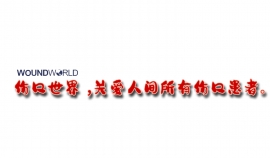
- 星期四, 09 3月 2023
Comparison of the effect of Triticum Vulgare and Hyperici Oleum on healing in traumatic membrane perforation: an animal study
Adem Bora1* , Kasım Durmuş1 , Zeynep D.Şahin İnan2 , Berat Baturay Demirkıran1 and Emine E. Altuntas1
Abstract
Background Traumatic tympanic membrane (TM) perforations usually heal spontaneously. The aim of this study was to investigate whether the topical application of Triticum Vulgare (TV) in experimentally induced traumatic TM perforations in the rats has a positive effect on wound healing process.
Methods The rats were randomly assigned to four experimental groups. Drugs were introduced twice a day for 7 days. On the 7th day, specimens were sent for histological examination.
Results Mean values found in group NC in terms of epithelial regeneration mean scores are as follows: fibroblast and collagen density, neovascularization, and density of inflammation cells were lower than all groups (p<0.05). It was found that reepithelization on the post-perforation 7th day was better in the HO group than the TV group. In terms of the subepithelial fibroblast cells, density of collagen fibers, formation of new veins, and inflammatory cell
accumulation, it was observed that the group TV was better than the group HO.
Conclusion This is the first study investigating the potential curative role of TV in an experimental rat model of tympanic membrane perforation. Considering these findings, it is concluded that TV can be more effective than HO on
wound healing in TM perforation.
Keywords Hyperici oleum, Triticum vulgare, Traumatic tympanic membrane perforation
*Correspondence:
Adem Bora
该Email地址已收到反垃圾邮件插件保护。要显示它您需要在浏览器中启用JavaScript。
1 Department of Otolaryngology, Faculty of Medicine Sivas Cumhuriyet University, 58140 Sivas, Turkey
2 Department of Histology and Embriology, Faculty of Medicine Sivas Cumhuriyet University, 58140 Sivas, Turkey © The Author(s) 2023. Open Access This article is licensed under a Creative Commons Attribution 4.0 International License, which permits use, sharing, adaptation, distribution and reproduction in any medium or format, as long as you give appropriate credit to the original author(s) and the source, provide a link to the Creative Commons licence, and indicate if changes were made. The images or other third party material in this article are included in the article’s Creative Commons licence, unless indicated otherwise in a credit line to the material. If material is not included in the article’s Creative Commons licence and your intended use is not permitted by statutory regulation or exceeds the permitted use, you will need to obtain permission directly from the copyright holder. To view a copy of this licence, visit http://creativecommons.org/licenses/by/4.0/.
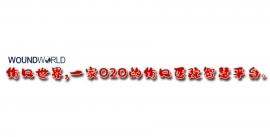
- 星期三, 08 3月 2023
Negative Pressure Wound Therapy for the Prevention of Surgical Site Infections Using Fascia Closure After EVAR—A Randomized Trial
Robert Svensson-Bjo ¨rk1 • Julien Hasselmann1,2 • Giuseppe Asciutto1,3 • Moncef Zarrouk1,2 • Jonas Bjo ¨rk4,5 • Linda Bilos6 • Artai Pirouzram6 • Stefan Acosta1,2 ID
Accepted: 29 August 2022 / Published online: 14 October 2022© The Author(s) 2022
Robert Svensson-Bjo ¨rk 该Email地址已收到反垃圾邮件插件保护。要显示它您需要在浏览器中启用JavaScript。
1 Vascular Diseases Research Unit, Department of Clinical Sciences, Lund University, Ruth Lundskogs gata 10, 205 02 Malmo ¨, Sweden
2 Vascular Center, Skane University Hospital, Malmo ¨, Sweden
3 Department of Vascular Surgery, Uppsala University Hospital, Uppsala, Sweden
4 Division of Occupational and Environmental Medicine, Lund University, Lund, Sweden
5 Clinical Studies Sweden, Lund University, Forum South, Lund, Sweden
6 Vascular Surgery Unit, Department of Cardiothoracic and Vascular Surgery, Linko ¨ping University Hospital, Linko ¨ping, Sweden
Abstract
Background Surgical site infections (SSI) in the groin after vascular surgery are common. The aim of the study was to evaluate the effect of negative pressure wound therapy (NPWT) on SSI incidence when applied on closed inguinal incisions after endovascular aneurysm repair (EVAR).
Methods A multicenter randomized controlled trial (RCT). Between November 2013 and December 2020, 377 incisions (336 bilateral and 41 unilateral) from elective EVAR procedures with the primary intent of fascia closure were randomized and included, receiving either NPWT or a standard dressing. In bilateral incisions, each incision randomly received the opposite dressing of the other side, thereby becoming each other’s control. The primary endpoint was SSI incidence at 90 days postoperatively, analyzed on an intention-to-treat basis. Uni and bilaterally operated incisions were analyzed separately, and their respective p-values combined using Fisher’s method for combining P-values. Study protocol (NCT01913132).
Results The SSI incidence at 90 days postoperatively in bilateral incisions was 1.8% (n = 3/168) in the NPWT and 4.8% (n = 8/168) in the standard dressing group, and in unilateral incisions 13.3% (n = 2/15) and 11.5% (n = 3/26), respectively (combined p = 0.49). In all SSIs, bacteria were isolated from incisional wound cultures. No additional SSIs were diagnosed between 90 days and 1 year follow-up. Conclusions No evidence of difference in SSI incidence was seen in these low-risk inguinal incisions when comparing NPWT with standard dressings after EVAR with the primary intent of fascia closure.
Clinical Trials: NCT01913132.
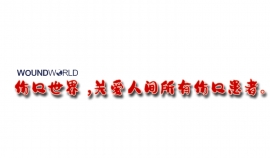
- 星期二, 07 3月 2023
Predictors of sternal wound infection post cardiac surgery in a Saudi Centre: a case control study
Adil A. Isaac*
*Correspondence:
Adil A. Isaac
该Email地址已收到反垃圾邮件插件保护。要显示它您需要在浏览器中启用JavaScript。
Department of Infectious Diseases, Saud Al-Babtain Cardiac Centre
(SBCC), 5443 King Khalid Street, Dammam, Eastern Province, Kingdom
of Saudi Arabia
Abstract
Background Sternal wound infection (SWI) post cardiac surgery remains an important cause of extra morbidity, mortality and cost. The objective was to identify risk factors for SWI in a cardiac centre in Eastern Saudi Arabia as part of the investigation into Surveillance variance in the local rates of SWI.
Methods We included cases and controls from a cross section of patients who underwent major cardiac surgery between 2017 and 2020 matched for age, sex and time of surgery. An explanatory logistic regression model was fitted to estimate the risk factors.
Results N=204 (51 cases and 153 controls matching ratio 1:3, from a source population of 985 patients). factors significantly associated with SWI in the final multivariate model: hospital stay OR (1.05, Cl 1.01–1.10), Graft Conduit BIMA versus No Graft OR (10.94, Cl 1.60–74.63), transfusion of both packed cells plus other blood products versus
no transfusion OR (3.53, Cl 93–13.44), HbA1c OR (1.09 Cl 0.84–1.41), BMI OR (1.25, Cl 1.04–1.50), perioperative blood
glucose OR (1.02, Cl 1.004–1.03), surgery time OR (1.19, Cl 1.00–1.58).
Conclusions The diverse aetiology, cross-disciplinary nature of SWI prevention, and despite improved prevention
and control practices, including related care bundles with their proven value, SWI remain a serious challenge in cardiac surgery. Multidisciplinary consensus guidelines are well overdue.
Keywords Sternal wound infection, Mediastinitis, Sternotomy, Cardiac surgery, Case control, Saudi Arabia
© The Author(s) 2023. Open Access This article is licensed under a Creative Commons Attribution 4.0 International License, which permits use, sharing, adaptation, distribution and reproduction in any medium or format, as long as you give appropriate credit to the original author(s) and the source, provide a link to the Creative Commons licence, and indicate if changes were made. The images or other third party material in this article are included in the article’s Creative Commons licence, unless indicated otherwise in a credit line to the material. If material is not included in the article’s Creative Commons licence and your intended use is not permitted by statutory regulation or exceeds the permitted use, you will need to obtain permission directly from the copyright holder. To view a copy of this licence, visit http://creativecommons.org/licenses/by/4.0/. The Creative Commons Public Domain Dedication waiver (http://creativeco mmons.org/publicdomain/zero/1.0/) applies to the data made available in this article, unless otherwise stated in a credit line to the data.
